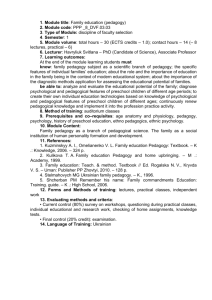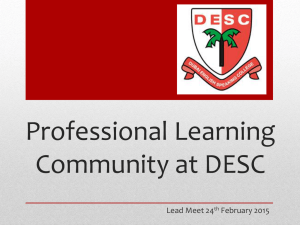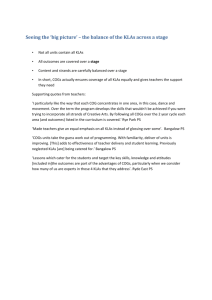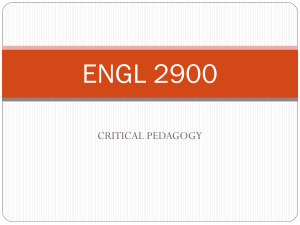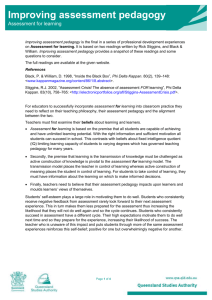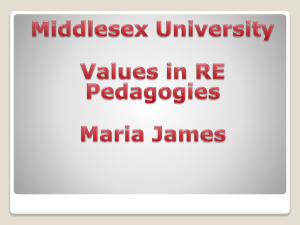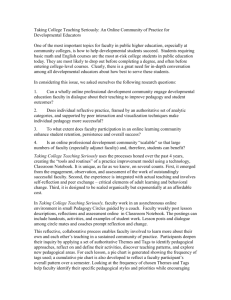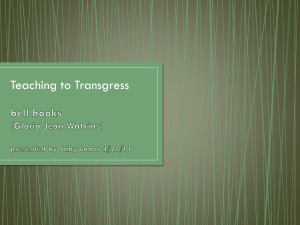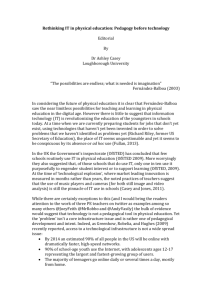Middle Years Transition Matrix: Education & Development
advertisement
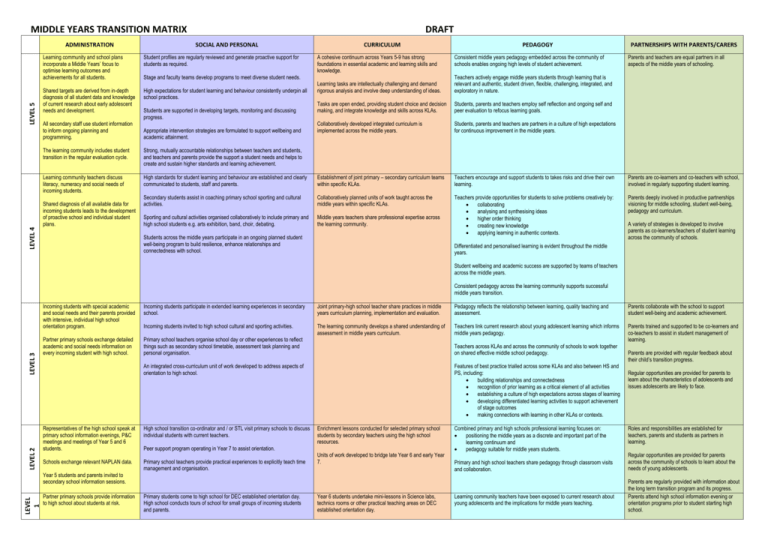
MIDDLE YEARS TRANSITION MATRIX ADMINISTRATION LEVEL 4 LEVEL 5 Learning community and school plans incorporate a Middle Years’ focus to optimise learning outcomes and achievements for all students. Shared targets are derived from in-depth diagnosis of all student data and knowledge of current research about early adolescent needs and development. All secondary staff use student information to inform ongoing planning and programming. DRAFT SOCIAL AND PERSONAL Student profiles are regularly reviewed and generate proactive support for students as required. CURRICULUM A cohesive continuum across Years 5-9 has strong foundations in essential academic and learning skills and knowledge. Stage and faculty teams develop programs to meet diverse student needs. High expectations for student learning and behaviour consistently underpin all school practices. Students are supported in developing targets, monitoring and discussing progress. Appropriate intervention strategies are formulated to support wellbeing and academic attainment. PEDAGOGY Consistent middle years pedagogy embedded across the community of schools enables ongoing high levels of student achievement. Learning tasks are intellectually challenging and demand rigorous analysis and involve deep understanding of ideas. Teachers actively engage middle years students through learning that is relevant and authentic, student driven, flexible, challenging, integrated, and exploratory in nature. Tasks are open ended, providing student choice and decision making, and integrate knowledge and skills across KLAs. Students, parents and teachers employ self reflection and ongoing self and peer evaluation to refocus learning goals. Collaboratively developed integrated curriculum is implemented across the middle years. Students, parents and teachers are partners in a culture of high expectations for continuous improvement in the middle years. PARTNERSHIPS WITH PARENTS/CARERS Parents and teachers are equal partners in all aspects of the middle years of schooling. The learning community includes student transition in the regular evaluation cycle. Strong, mutually accountable relationships between teachers and students, and teachers and parents provide the support a student needs and helps to create and sustain higher standards and learning achievement. Learning community teachers discuss literacy, numeracy and social needs of incoming students. High standards for student learning and behaviour are established and clearly communicated to students, staff and parents. Establishment of joint primary – secondary curriculum teams within specific KLAs. Teachers encourage and support students to takes risks and drive their own learning. Parents are co-learners and co-teachers with school, involved in regularly supporting student learning. Secondary students assist in coaching primary school sporting and cultural activities. Collaboratively planned units of work taught across the middle years within specific KLAs. Parents deeply involved in productive partnerships visioning for middle schooling, student well-being, pedagogy and curriculum. Sporting and cultural activities organised collaboratively to include primary and high school students e.g. arts exhibition, band, choir, debating. Middle years teachers share professional expertise across the learning community. Teachers provide opportunities for students to solve problems creatively by: collaborating analysing and synthesising ideas higher order thinking creating new knowledge applying learning in authentic contexts. Shared diagnosis of all available data for incoming students leads to the development of proactive school and individual student plans. Students across the middle years participate in an ongoing planned student well-being program to build resilience, enhance relationships and connectedness with school. A variety of strategies is developed to involve parents as co-learners/teachers of student learning across the community of schools. Differentiated and personalised learning is evident throughout the middle years. Student wellbeing and academic success are supported by teams of teachers across the middle years. LEVEL 2 LEVEL 3 Consistent pedagogy across the learning community supports successful middle years transition. Incoming students with special academic and social needs and their parents provided with intensive, individual high school orientation program. Incoming students participate in extended learning experiences in secondary school. Joint primary-high school teacher share practices in middle years curriculum planning, implementation and evaluation. Pedagogy reflects the relationship between learning, quality teaching and assessment. Parents collaborate with the school to support student well-being and academic achievement. Incoming students invited to high school cultural and sporting activities. The learning community develops a shared understanding of assessment in middle years curriculum. Teachers link current research about young adolescent learning which informs middle years pedagogy. Partner primary schools exchange detailed academic and social needs information on every incoming student with high school. Primary school teachers organise school day or other experiences to reflect things such as secondary school timetable, assessment task planning and personal organisation. Parents trained and supported to be co-learners and co-teachers to assist in student management of learning. Teachers across KLAs and across the community of schools to work together on shared effective middle school pedagogy. An integrated cross-curriculum unit of work developed to address aspects of orientation to high school. Representatives of the high school speak at primary school information evenings, P&C meetings and meetings of Year 5 and 6 students. High school transition co-ordinator and / or STL visit primary schools to discuss individual students with current teachers. Schools exchange relevant NAPLAN data. Primary school teachers provide practical experiences to explicitly teach time management and organisation. Features of best practice trialled across some KLAs and also between HS and PS, including: building relationships and connectedness recognition of prior learning as a critical element of all activities establishing a culture of high expectations across stages of learning developing differentiated learning activities to support achievement of stage outcomes making connections with learning in other KLAs or contexts. Enrichment lessons conducted for selected primary school students by secondary teachers using the high school resources. Peer support program operating in Year 7 to assist orientation. Units of work developed to bridge late Year 6 and early Year 7. LEVEL 1 Year 5 students and parents invited to secondary school information sessions. Partner primary schools provide information to high school about students at risk. Primary students come to high school for DEC established orientation day. High school conducts tours of school for small groups of incoming students and parents. Year 6 students undertake mini-lessons in Science labs, technics rooms or other practical teaching areas on DEC established orientation day. Combined primary and high schools professional learning focuses on: positioning the middle years as a discrete and important part of the learning continuum and pedagogy suitable for middle years students. Primary and high school teachers share pedagogy through classroom visits and collaboration. Learning community teachers have been exposed to current research about young adolescents and the implications for middle years teaching. Parents are provided with regular feedback about their child’s transition progress. Regular opportunities are provided for parents to learn about the characteristics of adolescents and issues adolescents are likely to face. Roles and responsibilities are established for teachers, parents and students as partners in learning. Regular opportunities are provided for parents across the community of schools to learn about the needs of young adolescents. Parents are regularly provided with information about the long term transition program and its progress. Parents attend high school information evening or orientation programs prior to student starting high school.
